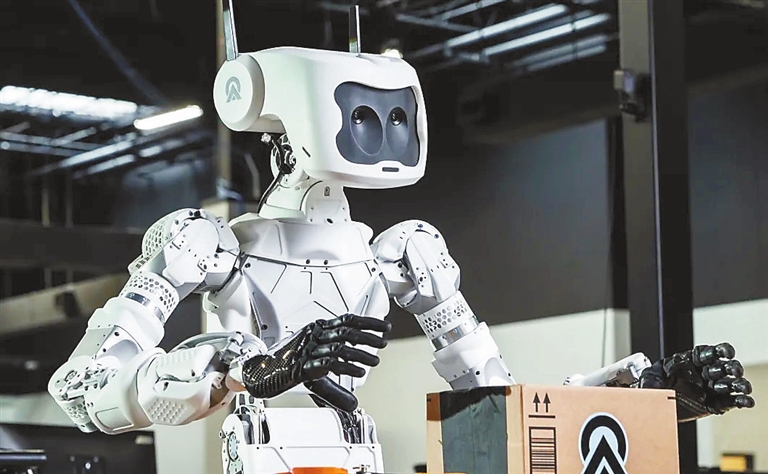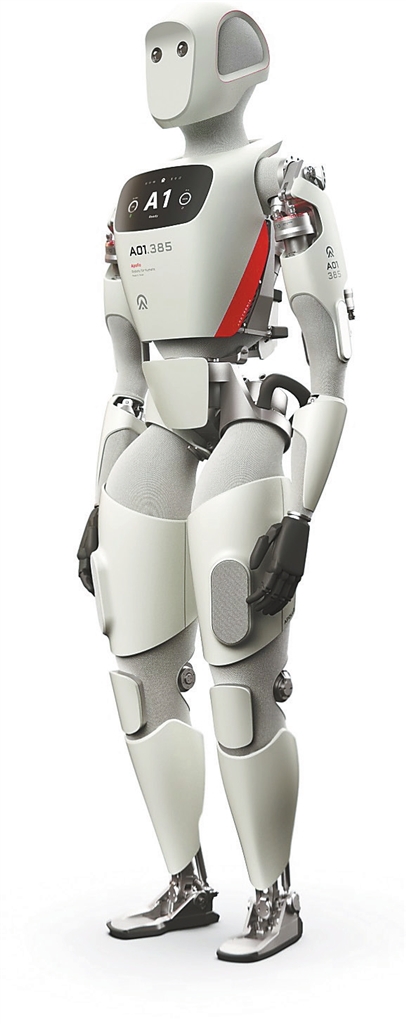

HUMANOIDS that handle household chores or build habitats on the lunar surface may sound like something from science fiction. But the team at robotics startup Apptronik based in Austin, Texas, the U.S. envisions a future where general-purpose robots will handle “dull, dirty and dangerous” jobs so humans don’t have to. The design for Apptronik’s latest humanoid robot, named Apollo, was unveiled Wednesday. The robot is on the same scale as a human being, standing at 1.7 meters tall and weighing 72.6 kilograms. Apollo can lift 25 kilograms and has been designed to be mass-produced and safely work alongside humans. The robot utilizes electricity, rather than hydraulics that aren’t considered to be as safe, and has a four-hour battery that can be changed out so it can operate for a 22-hour workday. In case humans may feel uneasy about the appearance of a humanlike robot, Austin-based firm Argodesign outfitted Apollo with features that are meant to feel approachable — and even friendly. The robot has digital panels on its chest that provide clear communication about remaining battery life, the current task it’s working on, when it will finish and what it will do next. Apollo also has a face and intentional movements, such as turning its head to indicate where it will go. The initial goal for Apollo is to put it to work in logistics, taking on physically demanding roles inside warehouses to improve the supply chain by addressing labor shortages. But the Apptronik team has a long-term vision for Apollo that extends for at least the next decade. “Our goal is to build versatile robots to do all the things that we don’t want to do to help us here on Earth, and eventually one day explore the moon, Mars and beyond,” said Jeff Cardenas, cofounder and CEO of Apptronik. Before starting Apptronik in 2016, the team members worked in the Human Centered Robotics Lab at the University of Texas at Austin. “The focus of the lab was all about how humans and robots will interact in the future,” Cardenas said. “As humans, our most valuable resource is time, and our time here is limited. And as toolmakers, we can now build for ourselves tools that give us more time back.” Rather than highly specialized robots that can only serve one purpose, Apptronik wanted Apollo to be the “iPhone of robots,” Cardenas said. “The goal is to build one robot that can do thousands of different things,” he said. “It’s a software update away from doing a new task or a new behavior.” Over time, Apollo’s functionality will increase through new models and updates to the point where it could be used in construction, the production of electronics, retail spaces, home delivery and even elder care. Eventually, Apollo will be less than the price of the average car. Traditional robots rely on high-precision parts. But the introduction of cameras and artificial intelligence systems have enabled the development of robots that rely less on preprogramming and instead are more responsive to their environments, which means that the parts used in production are more affordable, Cardenas said. At the heart of Apollo’s design are actuators, or robot muscles. Apptronik’s team has worked on more than 35 iterations of the core actuators that enable Apollo to walk, flex its arms and grasp objects like a human. (SD-Agencies) | 
